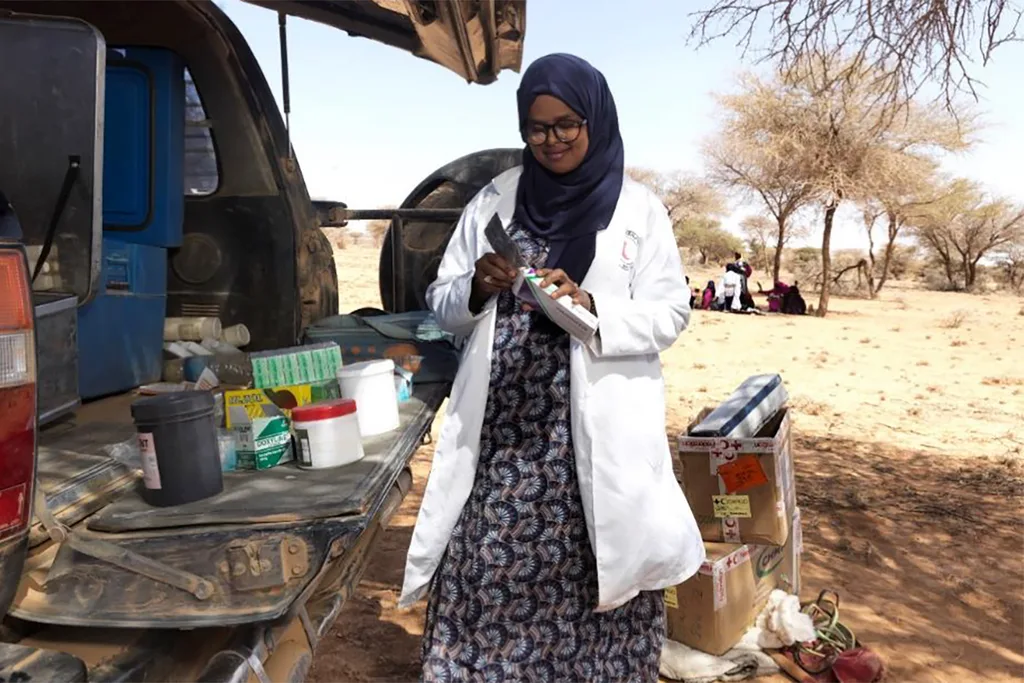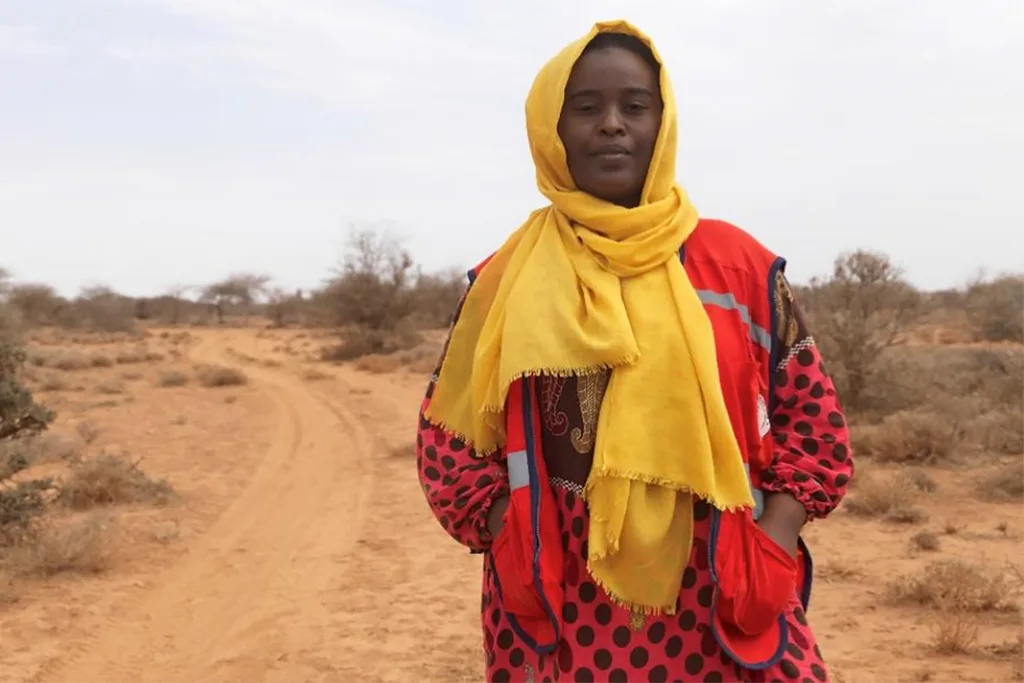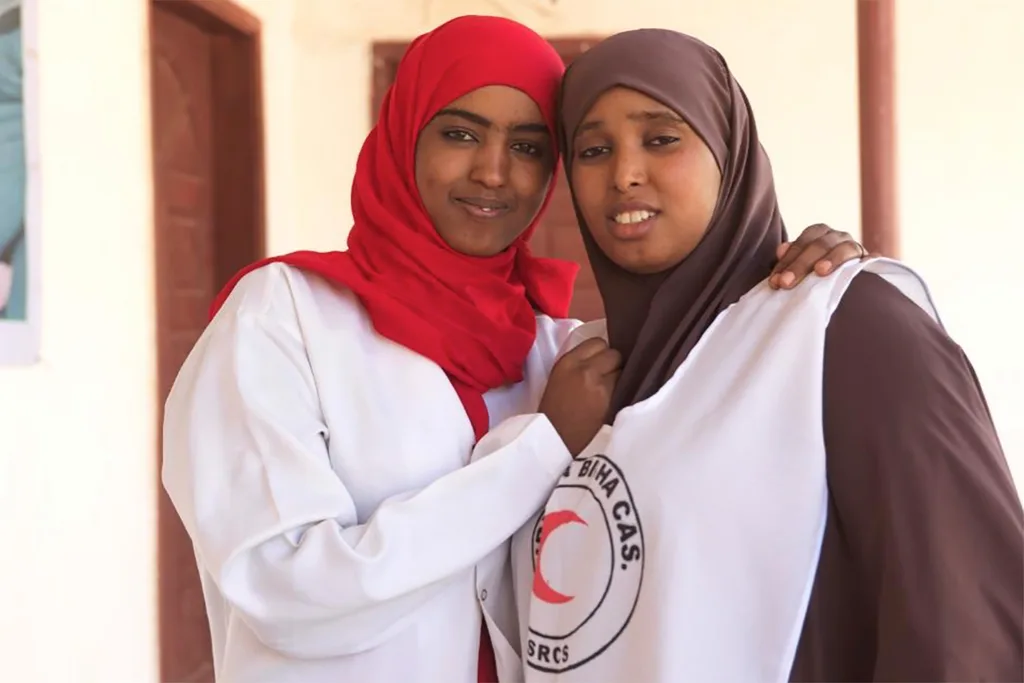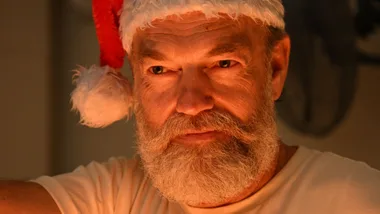When Australian Red Cross aid worker Jess Lees travelled to Somaliland last year, 25 million people in East Africa were facing starvation. Here, she reflects on the women at the forefront of the fight against famine.
Having recently returned from Somaliland – a self-declared independent Islamic state in the north-eastern region of Somalia – I am struck by the strength, courage and generosity of the women I met there.
The mothers, nurses, aid workers and community leaders who are banding together to help their families, communities and country fight back from four consecutive years of failed rains, conflict, internal displacements and disease.
Women like Hamdella. A recent graduate at 22 years old, she’s been working as a nutritional nurse for the Somaliland Red Crescent’s mobile health clinics for the past seven months. The simplicity and efficiency of these clinics never ceases to amaze me.

A doctor, a midwife and a nurse pile into a four-wheel-drive packed with medications and equipment, and tear across the parched earth. They immunise children, screen and treat them for malnutrition, provide medicine for the sick, and care for pregnant and lactating women who would otherwise have no access to healthcare.
“People are very happy when they see us because they don’t have health facilities. I am very excited about working here,” Hamdella tells me as she hands out medications to the group of waiting women who surround her, small children clutching at their legs at the back of the 4WD.
Hamdella is proud of what she does, and so she should be, because like so many other women she is at the forefront of the response here. “Red Cross Red Crescent helps people. It is helping them in health which is very important,” says Hamdella.
I first visited Somaliland around a year ago, when the world’s gaze was momentarily fixed on East Africa. Famine had been declared in South Sudan, and parts of Northern Kenya, Ethiopia and Somalia were teetering on the brink. I was part of a huge international Red Cross response to the ongoing drought and food crisis that has ravaged large swathes of the continent.
At that time, 25 million people were facing starvation and disease. Today, there is some good news, with improvements in the southern part of the region, some rainfall last year and a humanitarian intervention, a large-scale famine has been prevented. But, there are still 15.2 million people who lack enough food and face drought and disease every day.
So what exactly does it take to save millions of people from starvation? In the case of Somaliland, it is the local humanitarian responders. Women like Hamdella, and like Amran Hassan.

I met Amran on my first day in Somaliland’s capital, Hargeisa – a sprawling, dusty city dotted with brightly coloured tiled houses and herds of goats wandering the streets grazing on rubbish and the odd patch of dry grass.
Amran is the Disaster Response Manager for Somaliland Red Crescent. She oversees the many life-saving programs that are being implemented here: from restoring water facilities so people have access to clean water, to making sure the most isolated and vulnerable have access to medical care and distributing emergency relief items such as tarpaulins to provide a safe roof overhead, and sanitary supplies so women and girls can maintain their dignity.
“These programs give people hope,” Amran told me. “The suffering of my people due to natural disasters makes me feel that I need to contribute to their wellbeing. I am privileged to have the skills and the knowledge to make someone’s life better.”
The future of the response looks bright too as it isn’t only emergency interventions that takes up Amran’s long work days. She is also implementing strategies for a more sustainable future for communities. “We focus on implementation of resilience programs rather than just emergency interventions. Droughts are phenomena that can’t be changed in a short period of time but the impact of droughts and food shortage can be tackled if we are prepared,” says Amran.
But it isn’t just those who work full time in the response that are making a difference, I saw time and again how young people are volunteering and making a real impact in their communities.
When I met Habiq, a 20 year old volunteer at a Red Crescent health clinic she was at first shy and introverted; but as we talked she opened up and told me of how she was working towards her dream of going to college to become a midwife. “I don’t want to get married right now, first I want to go to college and finish and become a midwife,” she told me.

Like all the women I met in Somaliland, Habiq is motivated by a genuine desire to help.
“It is something within me that loves to be someone that helps people,” Habiq said. “I know that our people need a lot of help in terms of delivery and I saw that there is a lot of need in that and I want to be part of that support.”
In a country where one out of seven children will die before they are five years old and one in 12 women will die due to pregnancy-related causes, that support cannot come soon enough.
There are countless Hamdellas, Amrans and Habiqs throughout Somaliland. But we’re going to need an army of them to battle the disasters and crises affecting the region today.

Women and children are disproportionately affected by disasters and crises the world over. They make up the majority of civilians killed in conflicts, and are more likely to die in natural disasters; but from what I’ve seen – even in countries where they have far less freedoms, luxuries and security than we do here in Australia, it is women and girls who are leading humanitarian responses.
What we need to do is support them, with our funds, our advocacy, our solidarity and our respect.
Jess Lees is a Response Manager at Australian Red Cross. She has been deployed to Darfur, South Sudan and most recently Somaliland, where she is overseeing Australian Red Cross’ response to the East Africa Food Crisis.
Head to Australian Red Cross East Africa Food Crisis Appeal to donate. No crisis is too big to ignore.
 Red Cross
Red Cross









